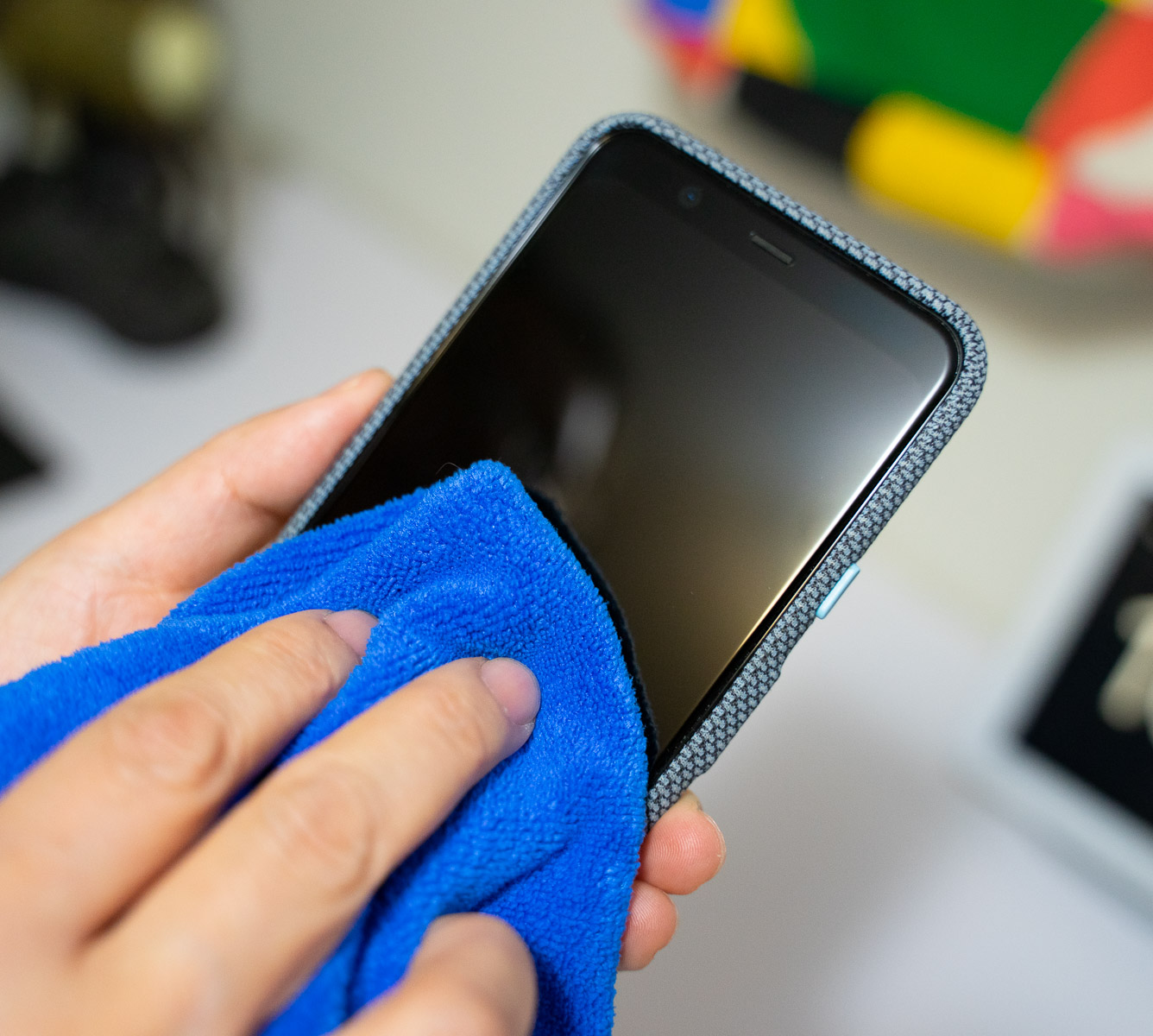Given our dependency on our electronics, it’s no surprise that they’re a great harbour for grime, germs and viruses. During the COVID-19 pandemic, it’s important to keep household surfaces and electronics clean.
Smartphones and tablets
By far our most frequently accessed tool, smartphones get dirty fast. So dirty, in fact, that a smartphone screen of an average highschooler was found to be 10 times filthier than a toilet seat. While a quick wipe on the jeans makes grime less visible, bacteria and other microbes are still everpresent. It’s more important than ever to start a deeper sanitization routine.
First, find a safe screen cleaner that’s certified to purge microbes. There isn’t much to it. Spray a small amount of the fluid onto a clean microfibre cloth and gently wipe down the display. Remember to never spray onto the display directly since the liquid could breach the seams of non-waterproof phones. While you’re at it, give the back of the phone a quick wipe, too, and wash your phone case in the sink with mild soap and water if it’s washable.

Related:
If you can’t find an alcohol-based screen cleaner, you can use the alcohol wipes in your first-aid kit. Both Samsung and Apple devices can be safely disinfected using alcohol-based wipes that contain at least 70 per cent alcohol. Do not use any bleach-based solution, though.
It’s also a good idea to pack a travel-sized bottle of cleaner or a few wipes in your backpack. More importantly, wash the microfibre cloth frequently.
Diligent wiping is good enough for most people, but those who want the nuclear approach can look to ultraviolet light. Hospitals sometimes use UV light (in conjunction with other sterilization measures) to disinfect their medical equipment. If you want your phone as clean as a doctor’s, then PhoneSoap is your best bet. It blasts your phone screen with a dose of UV light in a compact enclosure.
It’s equally important to remember that all the nasty stuff on your phone came from your hands. The best defence against coronavirus is to thoroughly wash your hands with soap and warm water for at least 20 seconds. Keep them away from your face, too.

But experts are divided when it comes to how often phones need to be cleaned, if at all. Not only do certain types of cleaning agents degrade smartphone screens, but some experts believe that displays need no more than a gentle wipe using a microfibre cloth and warm water.
Keyboards and mice
Your PC peripherals are also fantastic spawning grounds for bacteria. Fortunately, they’re very easy to clean thanks to their plastic and metal exterior. With PC mice, wiping them with rubbing alcohol and a microfibre cloth would do the trick; the same goes for keyboards with difficult-to-remove keys.

For a more thorough routine, you should pull off the keycaps using a key puller and wash them in warm soapy water. As you’re waiting for the keycaps to dry, use a soft brush or a can of compressed air to remove loose particles on the keyboard’s exposed base plate. Finally, use a cotton swab to scrub away the stuck-on grime. Because the keycaps need to dry before being put pack, you may not be able to use your keyboard for a little while.
For pictorial instructions, follow our keyboard cleaning guide.




